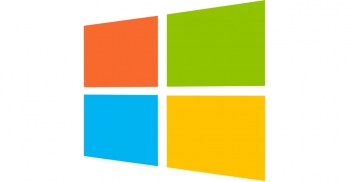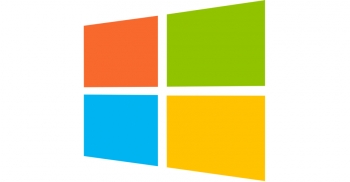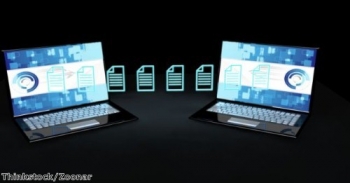- Home
- About Us
- Recovery Services Individual RecoveryEnterprise RecoveryAdditional Recovery
- Software
- Testimonials
- Locations

Data Recovery Expert
Viktor S., Ph.D. (Electrical/Computer Engineering), was hired by DataRecoup, the international data recovery corporation, in 2012. Promoted to Engineering Senior Manager in 2010 and then to his current position, as C.I.O. of DataRecoup, in 2014. Responsible for the management of critical, high-priority RAID data recovery cases and the application of his expert, comprehensive knowledge in database data retrieval. He is also responsible for planning and implementing SEO/SEM and other internet-based marketing strategies. Currently, Viktor S., Ph.D., is focusing on the further development and expansion of DataRecoup’s major internet marketing campaign for their already successful proprietary software application “Data Recovery for Windows” (an application which he developed).
Seagate ST3000DM001 data recovery
Seagate has always been the brand leaders in hard drive quality. Sure, they’ve had some issues with firmware bugs in the past, but that is behind them and generally speaking their hard drives are some of the best around. Lately though, they have had some issues with their 3TB series in particular the ST3000DM001, 000 and 002 suffixes.
Take a look at Backblaze’s statistics and the ST3000DM001 has the highest failure rate of all the drives. Ok so Backblaze put hard drives through their paces, but this model has a 28% failure rate. Similarly Apple have a replacement program for any Seagate 3TB drives that fit into this category.
If you have any of the 3TB DM series of hard disk drives, make sure you religiously keep your data backed up. Better still replace the drive. If this is installed in an Apple product check out their replacement program – you may be eligible for a new hard drive!
So what is the problem with these Seagate hard drives? Once again the problems seem to relate to corrupted firmware code stored in the hard drive’s service area. Other issues include the media cache.
Typically we are seeing twice the number of Seagate hard drives for data recovery and most are the DM series. Before you judge though, remember that Seagate are one of the biggest manufacturers and they are still making high quality hard drives. The failure rate is still only proportional with the number of hard drives they produce. So don’t worry unduly unless you have the DM series!
How can the new RAID 10 technology help
After RAID 6 comes RAID 10 which combines mirroring and data striping in a nested array. This is also known as RAID 1 + 0 and is very fast and reliable, but does require at least four hard drives to work. Unlike RAID 5 whereby the user will experience data loss if two hard disks fail, RAID 10 can cope with multiple failures with only a minimal impact on performance. Whilst you may think the chances of two or more disks failing is remote, it is certainly not! RAID arrays use identical disks to maintain disk geometry. However this does mean that any manufacturing defects are likely to be evident across all disks in the array. If a hard drive fails, the strain on the others can often cause multiple failures.
The advantages of RAID 10 are clear. Higher performance combined with greater stability is one of the most important. Indeed, all disks in a single mirror have to fail for the system to collapse. Similarly, striping larger mirror sets also allows users to create larger virtual drives. Data can be read back from more than one disk simultaneously, meaning that read speeds are drastically improved.
In contrast, it should be remembered that mirroring means the data must be written twice. RAID 10 quite simply eats disk space, cutting what’s available in half! Also an additional disk drive is required for the mirror set which does effect the write speeds. Yet hard disks are cheap in comparison to data recovery services and this is often a sacrifice many users are willing to take to protect their data.
Setting up RAID 10 couldn’t be easier. We suggest two methods – software RAID and FakeRAID. Software RAID is driven by the operating system which handles all the logic. Fake RAID on the other hand is implemented at BIOS level and is often denoted by motherboard manufacturers. Always use hard drives of identical make, model, interface and capacity, ensuring they are flashed with the latest firmware. If you are using FakeRAID, make sure your motherboard has the ‘on board RAID’ feature. Unlike other RAID levels, Windows has no obvious options for creating RAID 10. So the user has to combine RAID 1 created in Storage Spaces and RAID 0 in the Disk Management utility. It may take a while to format the disks, but it is a straight forward process.
5 Options If You’re Still Using Windows Server 2003
It is hard to miss the news that today marks the very end of the road for Microsoft’s popular Windows Server 2003 operating system. After that date, Microsoft will no longer offer support, maintenance or security patches for computers running Server 2003 leaving businesses reliant on the OS unprotected against software flaws or security vulnerabilities.
With only a few days until the deadline, the chances of realistically planning and executing a migration to another OS are very, very slim. So what are your options moving forward?
1. Don’t panic!
The end of support for Server 2003 does not mean that servers using that OS variant will simply explode tomorrow. Everything should continue running as normal, giving you time to finalise your migration plans and transfer data, services and roles to a new machine.
You could even use this grace period to seek assistance from a third party migration specialist to help make the transition as smooth as possible.
2. Dig deep
Despite official support ending today, Microsoft will actually continue to provide hotfixes and maintenance for Server 2003 indefinitely under certain conditions:
- Your business takes out a special support contract for each Windows 2003 server.
- You agree that each support request you lodge with Microsoft may be chargeable.
- You are able to pay a vastly inflated sum for the contract – the US Navy just paid $9 million for ongoing support of their Windows XP devices for instance.
RAID data saved after fire damage
We received a RAID-5 array which had failed following a fire. There were four hard drives in the array and two were showing signs of physical damage to the PCBs. Although administrators had remotely logged in and started to extrcat data from the RAID following evacuation, the server crashed shortly into the process.
The server had all the critical data relating to the business and more importantly - all their client files in PSD, PDF, AI, PNG and JPG formats. There was no reliable off site backup. Tape backups stored on site had also been damaged in the fire and it was decided it would be more economical and effective to recover data directly from the RAID.
Upon examination the PCBs on each hard drive in the RAID had literally melted and when the chassis were opened there was considerable smoke damage. Where the hard drive electronics were damaged, it is normally necessary to completely rebuild the circuitry. However the damage was so extensive that we had to find replacements and reprogram them. Each fire damaged drive was carefully cleaned to prevent contamination of the platters by soot and smoke particles. All the hard drives except one responded well to this process and we were able to gain sufficient 'images' of the raw data from the other three drives. Thankfully the redundancy in RAID5 meant we were still confident of a good data recovery






